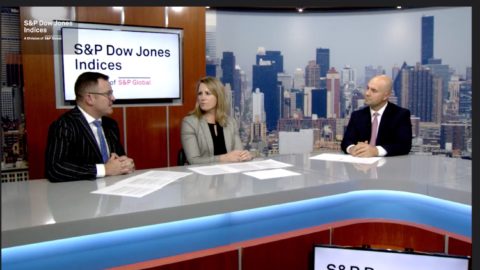You Are Here.
If the Stock Market Was a Map
A Timeline of Bull & Bear Markets
By: Steven Higgins, Financial Advisor, Principal
It was the longest road trip I’ve ever endeavored to make. A journey in more ways than one. My oldest daughter Grace and I pulled out of the driveway at four o’clock in the morning. The still very dark morning illuminated by the garage lights backlighting the silhouette of my wife and the teary mother of the not-so-little girl sitting next to me as she sobbed as we drove away from her childhood home and all of the things she’s known. The night before, I asked her what song she wanted to hear as we departed. She wanted Taylor Swift’s “Never Grow Up.” She may have even heard the voice in my head say, “are you serious?” So, with the emotional torture of T. Swift’s regretful ballad about lost youth narrating our departure, we drove through Broomfield for her last time for a while. The mundane of her hometown seemed to earn a more lengthy gaze from her as she contemplated each image as a farewell of sorts, making a mental image of her former high school, the park, and the city marquee. Grace was headed to graduate school in far away Durham, North Carolina and we were going to make the drive together.
The tears stopped by the time we got to Aurora (20 miles). A hundred miles in, I was out of coffee and foraging for a snack. By the time we hit the Kansas state line, I was Sammy Kershaw deep into my promised 1990’s country music history lesson. Halfway through Kansas (which is approximately 100,000 miles wide) I was contemplating this journey as a metaphorical lifespan. Because I relate most things to either sports or personal finance, I was sorting out an analogy of a trip through life, regrets, goals, mishaps, tragedies, celebrations, and lessons. The rest won’t be so sappy but hopefully the image of just one moment – both a celebration and for my wife and I, and also something of a loss – gives some perspective about how the moments in real time seem monumental. Over time, those moments create the entire story of our lives and if we knew what we know now, would we go back and do it differently? Or conversely, if we knew in the past what the future would reveal, would we make a different decision or would we be more confident in making the same decision today? With history as our best guidebook, can we increase our likelihood of succeeding in various endeavors? By familiarizing ourselves with what is historically normal, we desensitize ourselves from the shock value of what may simply just be new to us, but not necessarily new. Being “shocked” or in “awe” are emotional reactions.
Now, into my third decade of working as a financial advisor, I can say with certainty that the volatility of the markets, the ebbs of economics, and the pull of politics are not the things that have hurt investors and people preparing themselves for a life of financial independence. Without question, it has been the emotional response to what seems abnormal but what is actually normal – such as heightened market volatility. In the world of financial planning and wealth management, the concept of behavioral finance has become more of an area of study over the last 20 years. Fear and greed are the essential anchor points of financial decision making as they are said to be the most powerful emotions. However, in my experience, fear and greed are not equally matched. In fact, I’d say fear is multiples, more powerful in the financial decision process for people as it relates to investments. This does make sense when we consider the marketing narrative for financial services. The insurance industry makes billions from selling people products that “give you the upside of the market with none of the downside.” In fact, if you pay attention that vast majority of financial marketing you can see the attempts to elicit a fear response.
So, here we are on the cusp of emerging from what is now a 20 month long bear market wherein the S&P 500 at its worst dropped by about 25%. This is the latest in a series of bull and bear markets that have defined the biography of modern investing. It’s important for people to learn some key realities as it relates to the markets.
- We are always in either a bull or bear market. Bull markets are periods of consistent market growth and bear markets are periods of stock market declines most often characterized by a decline of 20% or more.
- Historically speaking, we spend way more time in bull markets. Since 1950 we’ve spent roughly 82% of the years in bull markets.
- During a bear market (the tough times), the news and narrative will be laden with fear and ominously suggest more disaster ahead. There will be no “blue sky.”
- During bull markets (the good times), the news and narrative will be laden with fear and ominously suggest disaster ahead. There will be no “blue sky.”
At Higgins & Schmidt Wealth Strategies, we approach investing as a learning experience as we work to educate clients on the realities of the markets and define a Personal Investment Policy. This Policy effectively matches our client’s planning goals with their expectations as it relates to market volatility and market performance. We give credence to economic realities and we use a tactical rebalancing process to maintain the integrity and composure of investment portfolios through market cycles. We have found that the more we shed light on the history of market cycles, the more we desensitize our clients to what may not be enjoyable, but is normal. If we can start to see market cycles as seasons instead of consequences, we are more likely to maintain the course when things get stormy.
I took a look at the S&P 500 since 1950. Bull and bear market cycles are defined loosely. When each cycle stops and another starts is up for debate but generally speaking we can identify meaningful trends in market direction. Consider this exercise as a map or journey of sorts through the stock market history since 1950 and consider how decisions made in each of the moments or cycles would have been beneficial. Would it have been wise to hold the course, increase investment, or cut and run? Also consider: these are just the big moments. For every event that makes this list there are likely ten times the amount of scary events, political disenchantments, and social upheaval. The main objective here is to dissuade an investor from falling into the trap of believing, “this time is different.” Every cycle has its own unique narrative to be sure, and there is certainly the possibility that one day things will be different. So, it doesn’t mean someone’s opinion or theory regarding irreparable demise is certainly wrong it just means that from a historical perspective, it is probably wrong.
So, top off the coffee, fill up the tank, and don’t forget the snack because we’re going on a journey. We will be starting our trip post World War II and we will work our way to present day. Consider the brief summary of each cycle with the context being, each bear market likely felt horrifying at some point. Also, if relevant, thinking about your own memories of these events. How did it feel? What was happening in your life? What decisions did you make? Do you even remember the event?
We’re off!…..
1950s Bull Market: This bull market followed World War II and was characterized by strong economic growth and the expansion of industries. The S&P 500 increased by approximately 267% over the span of about 7 years.
Late 1950s Bear Market: This bear market occurred due to economic concerns and the Soviet Union’s launch of the Sputnik satellite, which raised worries about U.S. technological and military competitiveness. The S&P 500 declined by around 21% over about 8 months.
1960s Bull Market: This bull market was marked by a period of economic growth and prosperity. The S&P 500 rose by around 87% over roughly 5 years.
Late 1960s Bear Market: High inflation, worries about the Vietnam War, the assassinations of Martin Luther King and Robert Kennedy, and social unrest contributed to this bear market. The S&P 500 decreased by about 36%.

Early 1970s Bull Market: Despite some economic challenges, namely record inflation over 15% during this period, the S&P 500 saw an increase of about 72% over approximately 3 years.
Mid 1970s Bear Market: Triggered by the Arab oil embargo, high inflation, and the Watergate scandal, this bear market was severe. The S&P 500 dropped by approximately 48% over about 21 months.
Late 1970s Bull Market: Following a period of economic difficulties, the S&P 500 experienced a resurgence. It rose by around 126% over approximately 5 years.
Early 1980s Bear Market: The Federal Reserve’s efforts to combat inflation and the Iran hostage crisis contributed to this downturn. S&P 500 decreased by about 27% over about 18 months.
1980s Bull Market: This bull market was characterized by a significant period of economic expansion and technological advancements. The S&P 500 increased by approximately 229% over around 5 years.
Late 1980s Bear Market (Black Monday): This bear market was the result of a global stock market crash, largely driven by computerized trading and trade imbalances. The S&P 500 dropped by about 34% in a single day and roughly 33% over a few months.
1990s Bull Market: One of the most notable bull markets, it was fueled by the technology and internet boom. The S&P 500 rose by around 417% over approximately 10 years.
Early 2000s Bear Market (Dot-com Crash): The bursting of the dot-com bubble and corporate accounting scandals caused this significant bear market. The S&P 500 fell by about 49% over roughly 2 years.
Mid – 2000s Bull Market (2003-2007): Following the dot-com crash, this bull market was driven by economic recovery and the housing market. The S&P 500 increased by about 101% over roughly 4 years.
2007-2009 Bear Market (Global Financial Crisis): The subprime mortgage crisis and the collapse of Lehman Brothers triggered this severe global financial crisis. The S&P 500 dropped by around 55% over roughly 1.5 years.
2010s Post-Financial Crisis Bull Market: This bull market followed the global financial crisis and was characterized by massive monetary policy interventions and a slow economic recovery. The S&P 500 increased by approximately 400% over around 11 years.
2020 COVID-19 Bear Market: The global COVID-19 pandemic and its economic impact led to a swift bear market. The S&P 500 fell by about 34% over a few weeks before experiencing a strong rebound.
Post-Pandemic Bull Market: As the world wrestled with the pandemic and re-opening, the economy, fueled by loose monetary policy and easy cash led to the stock market and many growth assets to not only recover but to rise in value likely because of early inflationary factors. As restrictions eased, people were eager to spend and the S&P 500 rose by about 130% over 21 months.
2022 Inflation Bear Market: Facing the highest level of inflation in four decades, the Federal Reserve was forced to initiate one of the aggressive monetary policy responses in history which included repeatedly raising interest rates by .75% a month. The Fed Funds Target Rate went from 0% to over 5% rapidly the stock market recoiled for fears of significant economic slow down. Over the course of 10 months the S&P 500 dropped by 24%.
YOU ARE HERE: 2023 Stock Market Recovery: As of July 31st, 2023 the S&P 500 was about 3.5% away from it’s all-time high mark set on December 31st, 2021. There is debate over whether we are currently in a bull market or bear market. Consensus opinions are that a new bull market is established when markets rise 20% from the market lows, which were set in October of 2022. By the previous definition, we entered a new bull market in June of 2023. As much as we want to declare victory, we simply can’t accept that view. To me it makes sense to declare a new bull market when a new market high is set. So, we’ll agree to disagree and since I’m the author, we’ll take a wait-and-see approach here. Inflation is on the decline, the Fed has all the reasons it needs to slow (if not end) the interest rate freight train, and the economy remains strong (although cracks have formed). The approaching political foray we call election season is regrettably ahead and that will cause a few raucous reactions in the markets. However, the big wind just may be at our back. So, keep your eyes on the road ahead, use history as a guide and carry on.
Data Sources: ycharts.com, US Bureau of Labor and Statistics.
Securities offered through LPL Financial, Member FINRA/SIPC. Investment advice offered through Higgins & Schmidt Wealth Strategies, a registered investment advisor and separate entity from LPL Financial. The opinions voiced in this material are for general information only and are not intended to provide specific advice or recommendations for any individual. All performance referenced is historical and is no guarantee of future results. There is no guarantee that a diversified portfolio will enhance overall returns or outperform a non-diversified portfolio. Diversification and asset allocation does not ensure a profit or protect against a loss. Stock investing involves risk including loss of principal. Bonds are subject to market and interest rate risk if sold prior to maturity. Bond values will decline as interest rates rise and bonds are subject to availability and change in price. Rebalancing a portfolio may cause investors to incur tax liabilities and/or transaction costs and does not assure a profit or protect against a loss.
















